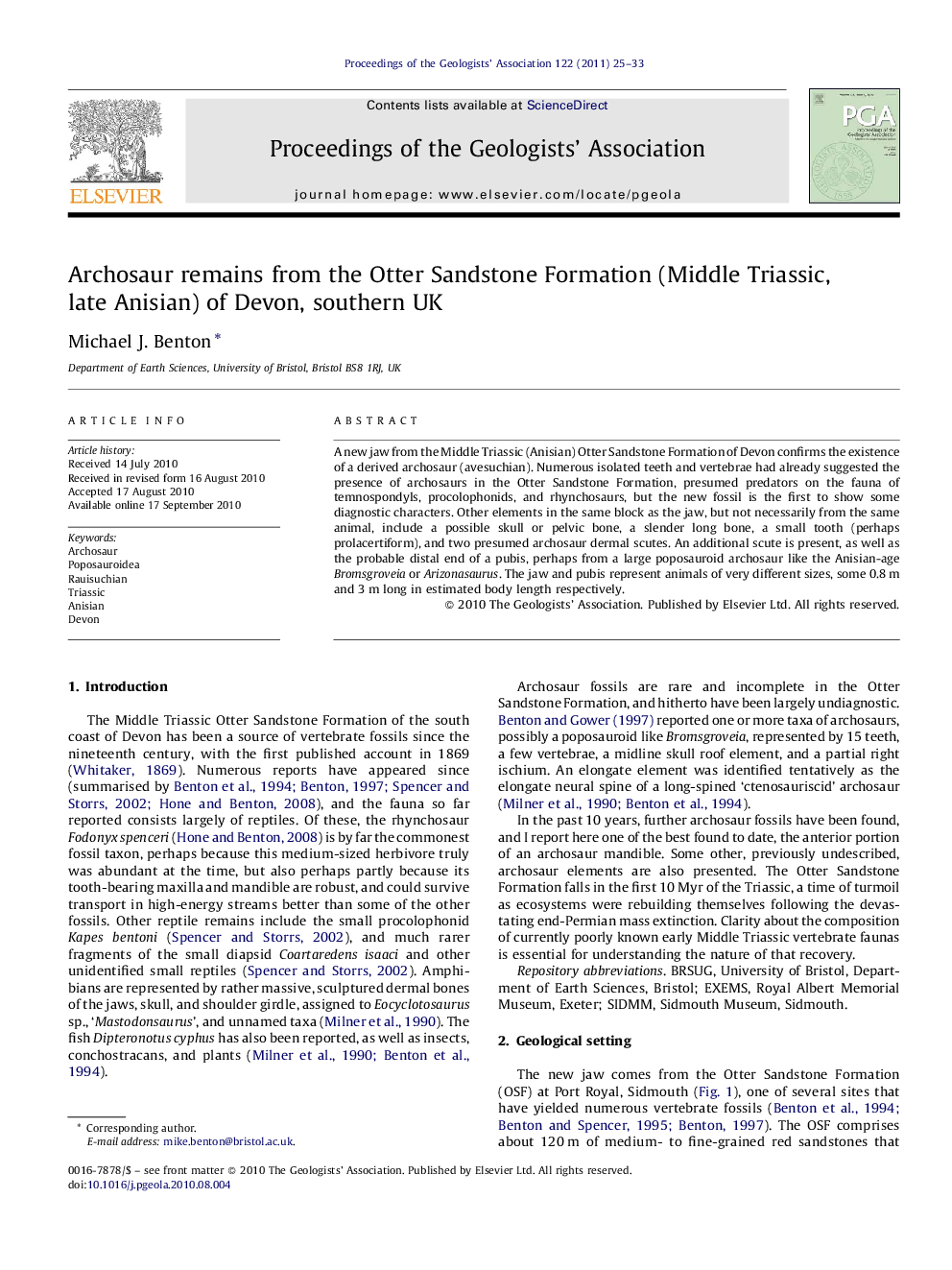| Article ID | Journal | Published Year | Pages | File Type |
|---|---|---|---|---|
| 4734789 | Proceedings of the Geologists' Association | 2011 | 9 Pages |
A new jaw from the Middle Triassic (Anisian) Otter Sandstone Formation of Devon confirms the existence of a derived archosaur (avesuchian). Numerous isolated teeth and vertebrae had already suggested the presence of archosaurs in the Otter Sandstone Formation, presumed predators on the fauna of temnospondyls, procolophonids, and rhynchosaurs, but the new fossil is the first to show some diagnostic characters. Other elements in the same block as the jaw, but not necessarily from the same animal, include a possible skull or pelvic bone, a slender long bone, a small tooth (perhaps prolacertiform), and two presumed archosaur dermal scutes. An additional scute is present, as well as the probable distal end of a pubis, perhaps from a large poposauroid archosaur like the Anisian-age Bromsgroveia or Arizonasaurus. The jaw and pubis represent animals of very different sizes, some 0.8 m and 3 m long in estimated body length respectively.
